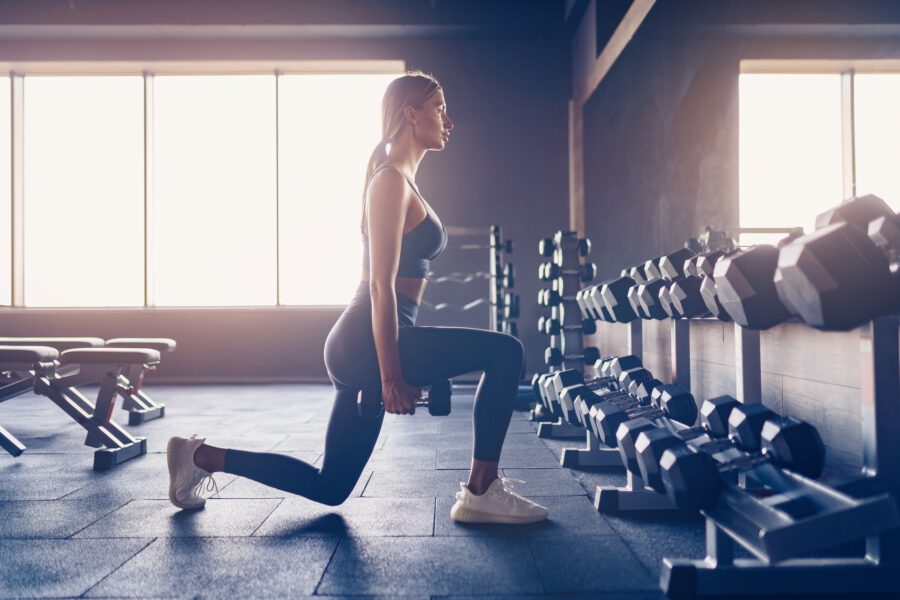Low-Impact Exercises for Better Health and Higher Gains
Your favorite physical activities and fun sports can enhance your health and fitness, but they can also harm your joints in the long run, even without knowing it. Sports like basketball, football, and other agility-based and leg power-dependent sports are all high-impact activities that can lead to wear and tear of the joints if you are not careful.
HIIT exercises and plyometrics can boost your strength and power, but they also pose a high risk for injuries and are vulnerable to error if your body is unprepared or lacks sufficient training.
Occasionally, you need to change your phase and give your body a break from all the pounding of high-impact tasks you are giving it.
Enter low-impact exercises.
Low-impact exercises are easier on your joints, particularly your knees, hips, and ankles. Your body loves these types of exercises and will thank you for it! It keeps you active and healthy while distributing the impact of your movement more evenly, causing minimal stress on your joints.
This article will discuss how you can use low-impact exercises to optimize your training and maximize your gains depending on your goals.
Occasionally, you need a phase change in your workout routine to prevent injury, exhaustion, or overtraining.
Most low-impact exercises train critical areas of fitness other than strength. For example, yoga and wall pilates promote flexibility, balance, and proper posture. So no matter your activity level, there's a low-impact exercise that will suit your preference.
Joint-friendly and Restorative
If you are recovering from an injury, low-impact exercise could be your best option. It improves the lubrication of your joints through gentle motions and promotes healing.
This is because our body can heal itself through movements by improving the blood flow in the injured muscles and other soft tissues.
Remember: Movement is medicine. Studies have shown that it is more detrimental to have complete bed rest if you are suffering from an injury. Low-impact exercises and other gentle movements can help accelerate recovery.
Exercising less than 45% of maximum aerobic power can safely improve the fitness of people with heart conditions. Low-impact exercises such as walking, swimming, and yoga can improve heart rate and lung capacity while maintaining minimal effort.
The heart wall is also a muscle, and just like any muscle, it grows stronger with regular and gradual exercise. So if you have a weak heart, asthma, or an extremely sedentary lifestyle, low-impact, and low-intensity exercises are an excellent start to living healthier.
It takes about 2 weeks to lose your gains in the gym if you stay inactive. Thankfully, by doing low-impact exercises, you can prevent detraining and muscle loss if you are away for a vacation or are too busy to hit the gym.
Whether you're a complete beginner, a senior, or an elite athlete looking for a recovery workout, low-impact exercises can be adjusted to suit your fitness level.
Low-impact activities are easy to do, have lower barriers to exercise, and are safer. Studies have shown that low-impact exercises can significantly improve cognition and overall health in older adults.
Walking
Don't underestimate the power of a great walk, especially in the morning. Walking is a total body workout that affects the heart, lungs, arms, legs, abs, and back. It keeps your posture in check and reinforces the natural curves in the spine.
Benefits:
- Promotes better posture
- Improves heart and lung health
- Alleviates pain and stiffness
- Improves balance
- Promotes strong bones
Rowing strengthens the upper and lower body and the core while minimizing the stress on your joints. This exercise utilizes 84% of your total body mass and burns about 535 calories per hour when rowing at a moderate pace.
According to a study published in the Journal of Applied Physiology, rowing is one of the most effective exercises in improving heart function and structures.
Benefits:
- Fat burner
- Strengthens the quads and upper back muscles
- Increases endurance
- Improves cardiovascular health
Swimming engages all your major muscle groups and provides a great aerobic workout. The water temperature can also aid muscle recovery and be a relaxing experience.
Furthermore, the buoyancy of the water takes away the stress and pressure on the joints during weight-bearing activities, allowing people with injuries to simulate normal activities inside a pool, helping them recover faster.
Benefits:
- Improves coordination
- Tones the muscles
- Improves cardiovascular endurance
Strength training can be done using different modalities such as barbells, dumbbells, machines, kettlebells, and resistance bands.
Low-Impact Strength Training is any strength workout that is gentle to the joints and doesn’t involve jumping or other ballistic movements that can put excessive stress on your joints.
Keep in mind that “low-impact” is subjective, and it varies for each person. To do low-impact strength training optimally and to challenge yourself, choose heavier weights or resistance where you can still complete 8 to 12 reps without sacrificing your form.
Benefits:
- Builds muscle
- Enhances strength
- Improves physique fast
- Burns tons of calories
Here are low impact workout plans you should consider:
Cycling is not just an enjoyable and low-impact outdoor exercise, but it also offers the added benefits of appreciating nature's beauty while efficiently managing weight and enhancing endurance.
On the other hand, you can also try indoor stationary bikes for a more customizable workout experience at your own pace.
Benefits:
- Builds lower body strength and stamina
- Can be done in low or high intensity
- A fun way to get fit
- Easy
Pilates is one of the most popular low-impact workouts. It is a total body exercise that uses specific movements to strengthen the core by developing pelvic stability and control.
It enhances body awareness and posture and improves overall flexibility through a series of gentle strength training routines. If you don't have time to go to a Pilates gym, try wall Pilates at home.
Benefits:
- Improves flexibility
- Builds core strength and stability
- Improves posture
- Enhances body awareness
If you are looking to soothe your body and mind, then yoga is for you. It is done by performing a series of poses and holding the position for a few minutes or transitioning to another. This not only improves flexibility but also helps alleviate chronic pain.
Yoga involves meditation practices and deep mindful breathing, allowing the mind to recover from everyday stress. Study that performing yoga regularly can decrease stress hormones in the body and promote better mental health.
Benefits:
- Promotes mindfulness
- Stress reliever
- Improves posture
- Improves breathing pattern
Low-impact and low-intensity exercises can also be used for active recovery. Studies have shown active recovery is far better than passive recovery in reducing post-workout pain and injury prevention.
Active recovery refers to low-intensity exercise after workouts or during rest days. The main purpose of active recovery is to promote blood circulation, which aids in transporting nutrients to the muscles, thus helping them recover faster.
There’s a wide range of low-impact exercises that can fit your goals and needs. By adding them to your routine and switching your phase, you can maintain your fitness without putting unnecessary stress on your body.
If you are too busy to work out, recovering from an injury, or having a bad day, consider doing a few low-impact exercises instead. Remember: a few minutes of exercise is far better than no exercise at all.

